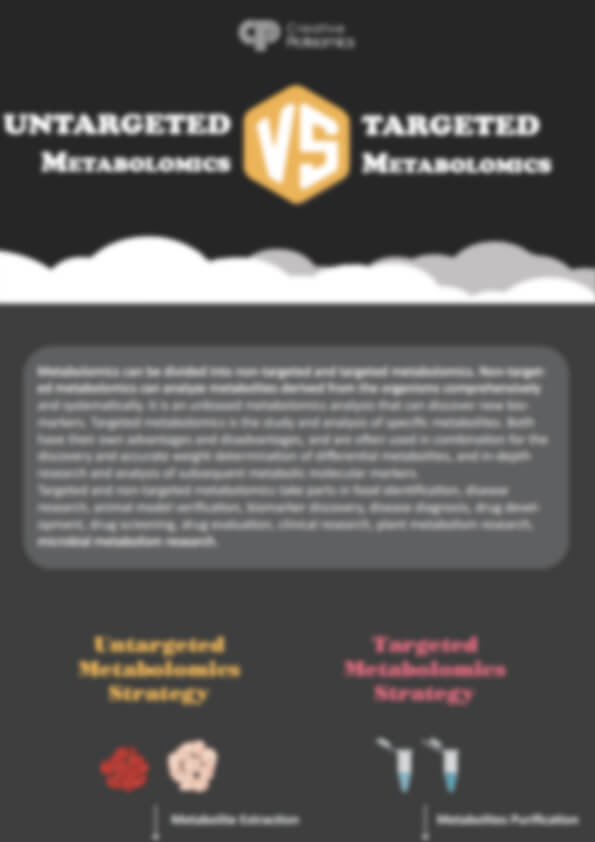Butyric Acid Analysis Service
Creative Proteomics delivers specialized butyric acid analysis services designed to meet the diverse needs of researchers and industries. Leveraging advanced platforms like HPLC-MS/MS, GC-FID, and Orbitrap MS, we ensure accurate quantification and comprehensive profiling of butyric acid and its related metabolites. Our services provide actionable insights for optimizing fermentation processes, monitoring food and beverage quality, studying microbial metabolism, and conducting environmental assessments. With tailored solutions, reliable data, and dedicated support, we help you tackle analytical challenges and advance your projects with confidence.
Submit Your Request Now
×- What We Provide
- Advantages
- Technology Platform
- Sample Requirements
- FAQ
- Publications
What is Butyric Acid?
Butyric acid (C₄H₈O₂), a short-chain fatty acid with a distinctive odor, is a critical metabolite in biological systems. It plays pivotal roles in gut microbiota regulation, energy metabolism, and cellular signaling. Naturally occurring in dairy products (e.g., butter, cheese) and fermented foods, butyric acid is also a biomarker in microbial fermentation studies and industrial processes such as biofuel production.
At Creative Proteomics, we specialize in precise quantification and characterization of butyric acid and its derivatives, enabling researchers to unravel its multifaceted biological and industrial significance.
Butyric Acid Analysis Service Offered by Creative Proteomics
Absolute Quantification of Butyric Acid
Using HPLC-MS/MS (Agilent 6495C) or GC-FID (Thermo Scientific TRACE 1310) with isotopically labeled internal standards (d4-butyric acid), we offer sensitive and precise quantification with a detection range from 0.01 ppm to 1000 ppm. Ideal for microbiome research, food quality control, and biofuel production monitoring.
Comprehensive Butyric Acid Derivatives Profiling
We detect over 20 related metabolites, including butyrate salts, esters, and butyryl-CoA using Ion-Pair Chromatography (IPC) and Q-Exactive™ HF-X Orbitrap MS with ultra-high-resolution. Suitable for applications in fermentation process monitoring, food and beverage analysis, and biochemical pathway research.
Custom Analysis for Complex Matrices
Tailored methods are available for lipid-rich tissues, fermentation broths, and environmental samples using enzymatic pre-treatment, SPME extraction, and 3D-EEM spectroscopy to minimize interference. Our team ensures reliable results even from challenging sample matrices.
Butyric Acid Stability and Metabolic Kinetics Studies
We offer degradation kinetics analysis under various conditions (temperature, pH, light) and metabolic pathway tracking using 13C-labeled butyric acid with Sciex 7500 ICP-MS. This service supports studies in product stability evaluation, bioprocess optimization, and metabolic engineering.
Detected Butyric Acid-Related Metabolites
| Category | Detected Compounds | Relevance |
|---|---|---|
| Butyric Acid and Salts | Butyric Acid, Sodium Butyrate, Calcium Butyrate | Core metabolites in microbial fermentation and gut metabolism |
| Butyrate Esters | Methyl Butyrate, Ethyl Butyrate, Butyl Butyrate | Flavor compounds in food products and fermentation indicators |
| Coenzyme A Derivatives | Butyryl-CoA, Crotonyl-CoA | Key intermediates in fatty acid metabolism and energy production |
| Short-Chain Fatty Acids | Propionic Acid, Acetic Acid, Valeric Acid | Metabolic markers for gut microbiota activity and fermentation processes |
| Ketone Bodies | β-Hydroxybutyrate, Acetoacetate | Indicators of metabolic state and energy metabolism |
| Hydroxy Fatty Acids | 3-Hydroxybutyrate, 4-Hydroxybutyrate | Biomarkers in metabolic disorders and fermentation pathways |
| Lactones and Aldehydes | γ-Butyrolactone, Butyraldehyde | Volatile metabolites relevant to flavor analysis and bioprocess monitoring |
| Amino Acid Derivatives | Butyrylglycine, Butyryl Carnitine | Indicators of amino acid metabolism and mitochondrial function |
| Fermentation Intermediates | Succinate, Lactate, Formate | By-products of anaerobic fermentation processes |
Advantages of Butyric Acid Assay
- High Sensitivity and Accuracy: Detection limit as low as 0.01 ppm and dynamic range up to 1000 ppm using Agilent 6495C MS and Thermo Scientific TRACE 1310 GC-FID.
- Comprehensive Metabolite Coverage: Detect over 20 butyric acid-related metabolites with ultra-high-resolution detection (240,000 resolution) using Q-Exactive™ HF-X Orbitrap MS.
- Versatile Sample Compatibility: Suitable for biological fluids, fermentation broths, food products, and environmental samples, with specialized sample preparation techniques.
- Advanced Methodology for Complex Matrices: Ion-Pair Chromatography (IPC) and tailored solid-phase extraction ensure accurate separation and recovery rates exceeding 95%.
- Fast Turnaround and Scalable Services: Standard analysis reports within 5-7 business days with expedited options and scalable processing capacity.
- Expert Data Interpretation: Comprehensive bioinformatics support for pathway analysis, metabolic profiling, and actionable insights.
Technology Platforms for Butyric Acid Analysis Service
GC-FID

TRACE 1310 (Figure from Thermo Scientific)

Orbitrap MS (Figure from Thermo)
Q-Exactive™ HF-X
Sample Requirements for Butyric Acid Analysis Service
| Sample Type | Required Volume/Amount | Storage Conditions | Notes |
|---|---|---|---|
| Serum / Plasma | ≥ 200 µL | -80°C | Avoid repeated freeze-thaw cycles. Use EDTA or heparin for plasma. |
| Urine | ≥ 500 µL | -80°C | Preferably collect in sterile containers without preservatives. |
| Feces | ≥ 100 mg | -80°C | Flash freeze immediately after collection. |
| Cell Culture Supernatant | ≥ 1 mL | -80°C | Filter to remove debris before storage. |
| Tissue (Animal/Plant) | ≥ 50 mg | -80°C | Rinse to remove blood or external contaminants. |
| Fermentation Broth | ≥ 1 mL | -20°C to -80°C | Provide relevant information on fermentation conditions. |
| Food and Beverage Samples | ≥ 10 g or mL | -20°C | Homogenize if necessary and store in sealed containers. |
| Soil or Environmental Samples | ≥ 10 g | 4°C (Short Term) / -80°C (Long Term) | Air-dry soil if microbial activity needs to be halted. |
Applications of Butyric Acid Assay Service
Fundamental Biological Research
Explore butyric acid's role in cellular metabolism, energy production, and short-chain fatty acid biosynthesis in various biological systems.
Food, Beverage, and Fermentation Quality Control
Monitor butyric acid levels to ensure product quality, assess fermentation efficiency, and detect spoilage in dairy products, fermented foods, and beverages.
Microbial Metabolism and Pathway Analysis
Investigate metabolic pathways and microbial fermentation processes by quantifying butyric acid as a key metabolite in microbial culture studies.
Agricultural and Environmental Monitoring
Evaluate soil, water, and compost samples to study microbial activity, organic matter degradation, and environmental impact.
Bioprocess Optimization
Track butyric acid as a biomarker for process efficiency in biofuel, bioplastic, and other bio-based chemical production systems.
Nutritional and Feed Analysis
Assess the quality and fermentation status of animal feed, silage, and agricultural byproducts through butyric acid measurement.
Demo
FAQ of Butyric Acid Analysis Service
How should I prepare bacterial culture samples for butyric acid analysis?
Centrifuge cultures at 4,000 × g for 10 min, collect supernatant, and filter through a 0.22 µm membrane. Store at -20°C.
What is the detection limit for butyric acid in plant tissues?
Our method achieves a limit of detection (LOD) of 0.05 µg/g in plant matrices.
Can you analyze butyric acid in highly viscous samples like butter?
Yes. We use enzymatic digestion followed by solid-phase extraction to eliminate lipid interference.
Do you provide stability data for butyric acid under different pH conditions?
Custom stability studies are available, with optional kinetic degradation modeling.
How do you ensure data accuracy in low-concentration samples?
We employ isotope-labeled internal standards (e.g., d₄-butyric acid) for normalization.
Learn about other Q&A.
Butyric Acid Analysis Service Case Study
Publications
Here are some of the metabolomics-related papers published by our clients:

- A non-probiotic fermented soy product reduces total and ldl cholesterol: A randomized controlled crossover trial. 2021. https://doi.org/10.3390/nu13020535
- Resting natural killer cell homeostasis relies on tryptophan/NAD+ metabolism and HIF‐1α. 2023. https://doi.org/10.15252/embr.202256156
- Enhance trial: effects of NAD3® on hallmarks of aging and clinical endpoints of health in middle aged adults: a subset analysis focused on blood cell NAD+ concentrations and lipid metabolism. 2022. https://doi.org/10.3390/physiologia2010002
- Function and regulation of a steroidogenic CYP450 enzyme in the mitochondrion of Toxoplasma gondii. 2023. https://doi.org/10.1371/journal.ppat.1011566
References
- Kao, Ming‐Shan, et al. "Microbiome precision editing: Using PEG as a selective fermentation initiator against methicillin‐resistant Staphylococcus aureus." Biotechnology journal 12.4 (2017). https://doi.org/10.1002/biot.201600399
- Minkler, Paul E., et al. "Selective and accurate C5 acylcarnitine quantitation by UHPLC–MS/MS: Distinguishing true isovaleric acidemia from pivalate derived interference." Journal of Chromatography B 1061 (2017): 128-133. https://doi.org/10.1016/j.jchromb.2017.07.018











